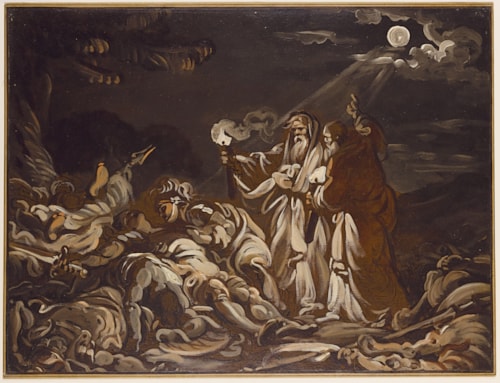
Jean-Simon BERTHÉLEMY
Laon 1743 - Paris 1811
Biography
The son of the sculptor Jean-Joseph Berthelémy, the history painter Jean-Simon Berthelémy was trained in the studio of Noël Hallé. Among his earliest independent commissions was a group of decorative paintings for the Hôtel de l’Intendance de Champagne at Châlons-sur-Marne. Berthelémy won the Prix de Rome in 1767 with a painting of Alexander Cutting the Gordian Knot, and, after three years at the Ecole Royale des Elèves Protégés, was enrolled as a pensionnaire at the Académie de France in Rome between 1771 and 1774. Little survives of his work while in Rome, however, apart from a handful of splendid landscape drawings in red or black chalk and a painting of The Death of a Gladiator, today in the Los Angeles County Museum of Art. Berthelémy was adept at working on a large scale, and early in his career developed a particular reputation as a ceiling painter. Agrée at the Académie Royale in 1777 and reçu in 1781, he exhibited regularly at the Salons between 1779 and the outbreak of the Revolution ten years later.
Highly regarded as a history painter, Berthelémy received several important commissions, including ceiling paintings for the Palais du Louvre and the Palais de Luxembourg in Paris and the château of Fontainebleau. He painted altarpieces for churches in Paris, Laon, Douai and elsewhere, as well as a number of portraits. Like his master Hallé before him, he provided cartoons for the Gobelins tapestry manufactory, mainly of scenes from classical and French history, and also designed costumes for the Paris Opéra. During the period of the Directoire, Berthelémy served on a committee tasked with selecting works of art from Italy to be brought back to Paris, and he continued to earn official commissions during the Consulate and Empire.


